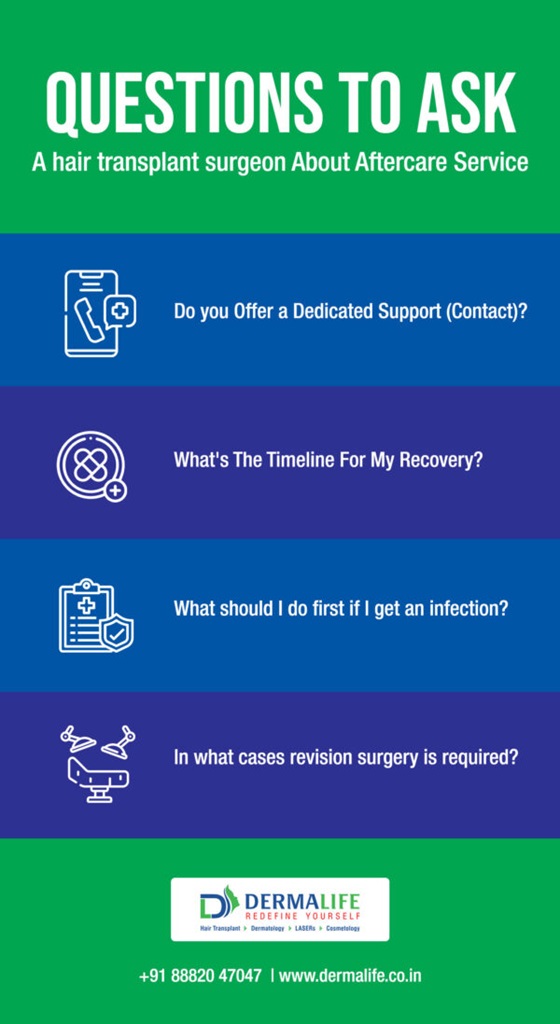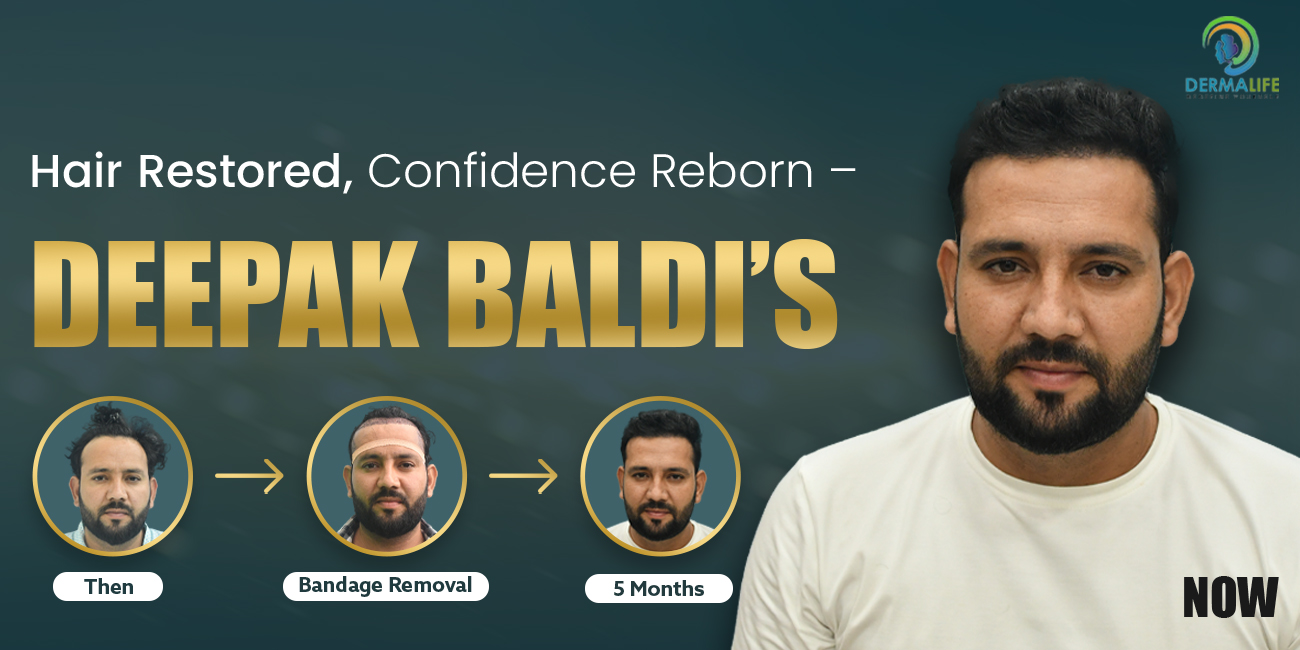What is the one thing you dread the most apart from ageing? If you have answered hair loss or baldness, you are not alone but the best thing is that we may have the ideal solution for you. Thankfully, there are hair restoration procedures like Follicular Unit Extraction (FUE) and Follicular Unit Transplantation (FUT).
However, you need to gain a clear and complete understanding of what things to prefer and what to avoid after returning home post-surgery. This is because your newly implanted hair grafts are still fragile and would require a lot of care and nurturing. You need to remember that adherence to the post-operative instructions as part of hair transplant care after surgery would speed up the hair transplant recovery process and help you achieve optimal results.
Table of Contents
Feel free to skip ahead if one topic catches your eye:
- How to prepare yourself for hair transplants?
- How to Choose the right procedure for you (FUT or FUE)?
- What to do immediately after a hair transplant?
- After 7-14 days
- After 1 Month
- After 2-3 Months
- Do I need any revision surgery?
- Takeaway
How to prepare yourself for hair transplants?
So you are all set to get a hair transplant. Congratulations, that’s exciting! Now is the time for you to prepare yourself beforehand for the best hair transplant in Delhi results.
The first thing you do is to locate the best hair transplant clinic for you. If you want the most advanced hair restoration treatments in the Delhi NCR region, DermaLife would be happy to assist.
- You need to start getting ready for the hair transplant procedure. It is highly recommended that you stop the use of nicotine and alcohol. You should have a detailed word with your surgeon on the tips and precautions to be followed before the surgery.
- One week before the surgery, you should stop taking blood thinners, herbal supplements, and Vitamins B & E after consulting with your surgeon.
- The use of dye and hair styling products should be stopped at least 2 weeks before the surgery.
- On the day of surgery, you should use nothing but a natural shampoo to clean your hair and scalp.
- You need to follow the drinking and eating instructions the night before the surgical procedure.
- You should avoid tea, coffee, or other beverages including nicotine on the day of surgery.
- You should wear loose-fitting clothing and ask someone to accompany you.
How to Choose the right procedure for you (FUT or FUE)?
FUE (Follicular Unit Extraction) is a minimally invasive procedure to restore hair growth in patients who are diagnosed with baldness mainly male pattern androgenic alopecia. During this procedure, the surgeon extracts hair follicles from the back region of the patient’s scalp and starts implanting the extracted follicles from the donor area to the balding areas (recipient areas).
The surgeon may extract hair from the patient’s scalp, chest, arms, or legs. FUE procedure’s primary objective is to ensure hassle-free removal of follicular unit grafts without resulting in any kind of trauma to the hair follicles. The surgeon ensures this by removing hair follicles one at a time and then aligning the extracted follicles to make them in line with the natural hair clusters they grow in.
The entire procedure lasts for around 6 to 8 hours and is performed under local anesthesia so the patient does not experience pain or discomfort during the surgical procedure. FUE hair transplants usually have a success rate of around 92-96 percent. The cost of FUE procedures is approximately INR 90,000-3,00,000 depending on the area of baldness and also it may vary from clinic to clinic.
Who is the right candidate for FUE Hair Transplant?
- People who have been losing hair for more than 5 years.
- Men whose hair loss condition has progressed beyond class 2 or above on the Norwood scale
- People with rich hair follicle density around the scalp’s donor areas
- People who have good general and overall health
- Already had a round of hair restoration procedures such as FUT in the past
- People who want to keep their hair short
- People who require a large number of grafts
- People who want to use their body hair like beard and chest hair to be used to cover bald areas
- People who want to make a quick return to their routine activities
FUT (Follicular Unit Transplantation) is a surgical hair restoration procedure performed under local anesthesia for a period of 6 to 8 hours to restore hair growth and appearance. The estimated cost of the FUT hair transplant procedures in India is INR 85,000-1,35,000 though it may vary from clinic to clinic.

What to do immediately after a hair transplant?
Patients need to follow the highest standards of hair transplant for the first 10 days of care. Utmost care to be taken after a hair transplant should be the primary objective after the surgery. Patients should always follow all tips and precautions after a hair transplant, as suggested by the surgeon as part of the aftercare after the hair transplant phase.
- Immediately after the surgery, you will receive a water solution and a spray bottle. You may use clean tap water when the water solution is finished. You will be expected to spray the donor and transplanted areas every 30-60 minutes for the first 12-14 hours after the surgery. It is recommended that you put a clean and soft towel around the shoulders and let all the sprayed water drip down.
- It is recommended that you proceed to sleep once this 12-14-hour exercise is completed. For this, you should sleep on your back with your head on a slightly elevated level. Soft, clean, and hygienic pillows must be used.
- You should consume plenty of water (at least 14-18 glasses of water) and eat light every day during the recovery period. You need to avoid direct contact with Sun and take your medications on time.
- You should avoid strenuous activities.
- You may experience swelling, pain, discomfort, or inflammation in the donor area after a hair transplant. However, these side effects can be mitigated by using the prescribed antibiotics, anti-inflammatory medications, and pain-relieving medications.
Day 1 to 3
- On the next day after surgery, you should make it a habit to spray the water hour when you are awake.
- You should have an uninterrupted sleep of 7-9 hours at night. Spraying the donor and transplanted areas helps in preventing the formation of scabs. Moreover, the transplanted grafts are required to be kept hydrated throughout this transition period. Hydration is critical to the survival of hair grafts.
- You need to continue with the prescribed antibiotics, anti-inflammatory medications, and pain-relieving medications.
- When can I use normal shampoo after a hair transplant? Starting day 4 to day 14, you can start a regime with shampoo if advised by the surgeon. For this, you can fill a bowl with clean, tepid water and put 10ml of shampoo. Now, mix it to make the solution soapy. You can now proceed to pour the solution over the donor and transplanted areas. Any soapy solution can then be rinsed off. Once this has been done, you can pat the scalp gently using a clean and soft towel. Under no circumstances, you should exert force as it may damage the newly transplanted hairs. It is important to remember here that you should avoid wearing a hat or standing near a power shower. You must allow hair to dry on its own instead of blow-drying or towel-drying hair.
- You need to avoid diving, swimming in pools with chlorine, or going out without protective measures.
- You should only use natural hair products after a hair transplant as part of the post-care
After 7-14 days
- 7 days after the hair transplant, you can continue with the shampoo regime till day 14 as discussed above.
- If you have undergone a hair transplant by the FUT method, the surgeon or the support staff will remove the stitches between days 10 and 12.
- FUE patients are not required to visit the hair restoration clinic for post-operative checks because stitches are not involved in the FUE method.
- After day 14, the surgeon may recommend ‘minoxidil’ to enhance hair growth. It is important to note that minoxidil should be used in the transplanted area during the morning and night. It can be used for 6 months or more as recommended by the surgeon.
- Patients should continue with the prescribed antibiotics, anti-inflammatory medications, and pain-relieving medications.
- You need to avoid diving, swimming in pools with chlorine, or going out without protective measures.
After 1 Month
Post-hair transplant after 1 month, patients may start noticing a considerable growth of hair in the “treated” areas. The levels of pain, discomfort, swelling, and inflammation will be subsided by now and patients can make a return to their routine activities after having a word with the surgeon. Patients need to follow all post-operative measures and take their medications on time. They should regularly visit the surgeon’s office to track progress.
- Patients should avoid taking power showers or rubbing their hair vigorously.
- Dyes and hair styling products should be avoided.
- Patients must abstain from nicotine products and alcohol.
- Patients should lead an active lifestyle as part of the FUE hair transplant care phase.
- Can I use oil after a hair transplant? You may use castor or coconut oil after having a word with the surgeon.
- Patients may seek the help of a professional as part of the aftercare.
After 2-3 Months
You may experience swollen, small cysts (pimple-like sacs) 2-3 months after the hair transplantation surgery around the hair follicles. These small blisters start forming in the first month after the surgery as the new hairs start to grow and break through the skin layers. You should not consider this as an infection as it is natural.
In a majority of cases, these blisters would open on their own and disappear without medications. However, you should seek immediate medical intervention if you notice their size is getting abnormal or if pimples accompanied by redness start occurring.
During this period, you should visit the surgeon for follow-up consultations and enquire about the progress of your hair restoration case by taking hair transplant pre and post-pictures of the treated area.
Do I need any revision surgery?
Patients may opt for revision (corrective) hair transplant surgery if they are not completely satisfied with the results of the initial hair restoration procedure. It is commonly selected by patients who believe they have not received desirable aesthetic hairlines and want to proceed with further grafting.
Hair restoration revision surgery can be used to:
- Improve the aesthetics of hairline, hair, and/or scalp
- Create a single linear scar to mask a series of incisions made during previous surgeries
- Conceal scarring that happened because of surgery in the past
- Implant healthy, new hair follicles
- Extract existing hair follicles that were mistakenly misplaced by the surgeon
- Alleviate the discomfort or pain of scar tissue or tightened scalp
Takeaway
If you have any questions about Follicular Unit Extraction (FUE) and Follicular Unit Transplantation (FUT) procedures or how they can help you reclaim your hairline, please don’t hesitate to visit our website at www.dermalife.co.in.
At Dermalife, you will get the best treatment and post-operative care at affordable costs.





